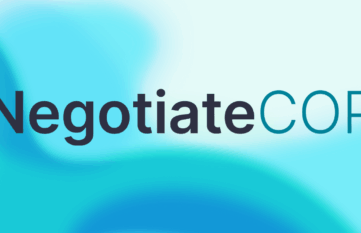As the United Nations (UN) Under-Secretary-General and Special Envoy for Digital and Emerging Technologies, you work on global strategies for a just digital future. But damaged submarine cables disrupt internet connections, tech giants are gaining political influence, and billions of dollars in AI investments are concentrated in Western industrialized countries. How can a just digital future be shaped under these circumstances?
The most pressing technology challenges today – digital inequality, geopolitical tensions, and AI power concentration, share a common characteristic: they transcend national boundaries. In a global economy where data moves seamlessly across borders, digital cooperation is essential. Take a simple example: the moment you publish this interview, the content will travel across servers located in multiple countries, routed through undersea cables owned by various entities, and stored on networks operating under different legal frameworks.
Unlocking the potential of technology and addressing challenges like digital inequality, or equitable access to AI benefits demand a coordinated global response. The Global Digital Compact (GDC) as part of the UN Pact for the Future sets out practical steps to ensure that digital advancements serve humanity as a whole. Our office, the UN Office for Digital and Emerging Technologies (ODET), supports the UN Member States in advancing this vision. We work across five key areas: fostering digital cooperation, facilitating inclusive multistakeholder dialogue, advising UN leadership on key technology trends, enhancing coordination across the UN system, and supporting GDC implementation.
You were a speaker at the launch of the second round of the “GovStack Women in GovTech Challenge 2025” – this competition supports women in developing concrete digital solutions so that states can function better and also consider the needs of women. What significance does such a competition have in light of the fact that women are particularly affected among the 2.6 billion people without internet access?
Indeed, programs like the “Women in GovTech Challenge” are transformative on multiple levels. First, they serve as a powerful symbol, sending a clear and inspirational message about the importance of women’s participation and leadership in shaping digital government. This visibility helps break down stereotypes and encourages broader engagement from women across different sectors. Second, and most importantly, the challenge creates tangible opportunities for women to develop technical expertise and leadership skills, empowering them to actively shape the future of digital governance.
Through this program, participants gain hands-on experience in applying the guidelines for digital public infrastructure (DPI), the DPI Safeguards Framework, ensuring that principles of safety, equity, and inclusion are embedded from the start in digital solutions. Furthermore, the Women in GovTech Challenge ensures that digital innovation is not just about technological advancement but also about creating systems that reflect the needs and perspectives of women.
The “Women in GovTech Challenge” will ultimately result in open solutions that will be incorporated into DPI. DPI also includes digital payment systems or digital identities – as the basis for building a sovereign digital ecosystem. Why are these open and interoperable systems crucial for economic growth, social participation and digital sovereignty – especially for countries in the Global South?
When DPI is designed with flexibility and local adaptability, it unlocks new opportunities. For instance, in Pakistan, DPI has enabled instant digital payments, allowing women in rural communities to access financial services for the first time, build credit histories, and achieve greater financial independence. Moreover, open and interoperable DPI stimulates economic growth by enabling private sector organizations to innovate more rapidly and bring new services to market. This fosters job creation, drives competition, and accelerates economic development. As a result, DPI contributes to a compounding cycle of impact: inclusive economic growth lifts individuals out of poverty, leading to increased demand for essential services, which in turn drives production, income generation, and sustained economic advancement.
Digital transformation needs trust on all sides – people want to be able to rely on government digital services in particular being reliable and trustworthy. How does your “DPI Safeguards Initiative” contribute to this?
Digital trust is foundational to digital transformation, yet concerns over discrimination, exclusion, and security risks can erode confidence in government digital services. The DPI Safeguards Initiative directly addresses these concerns by establishing clear principles and actionable recommendations to mitigate risks. By embedding safety, inclusion, and human rights protections across the entire DPI lifecycle, the initiative ensures that digital systems remain secure, transparent, and aligned with public interest. This safeguards not only enhance user trust but also long-term legitimacy and adoption of digital public infrastructure.
We are currently experiencing a dizzying development in the field of AI – “Deepmind” founder Mustafa Suleyman warned a year and a half ago of the “coming wave” that threatens to overwhelm us if we do not set limits. Do we need governance specifically for AI? Or do we need a different, new understanding of digital governance and global rules for the digital transformation as a whole?
The risks and benefits associated with AI are both immense and multifaceted, and it is clear that governance is essential to mitigate potential harms while maximizing benefits. However, we must emphasize the need for a global approach to AI governance, rather than fragmented, nation-specific strategies. While there is no shortage of dialogues and documents on AI governance, these efforts still lack comprehensiveness and reach.
A critical gap remains in truly inclusive representation, particularly concerning perspectives from the Global South, which have often been excluded from international AI governance discussions. There is no global alignment on implementation for AI governance. For example, different jurisdictions struggle with interoperability and incentives for compliance. There are ongoing debates about whether binding regulations are necessary or if non-binding “nudges” are sufficient.
Similarly, trade-offs between access and safety, and the focus on present versus future harms, remain contentious. These challenges are exacerbated by the lack of common understanding of AI across national and multinational frameworks. However, it’s crucial that we create space for diverse regulatory approaches that respect the world’s social and cultural diversity.



